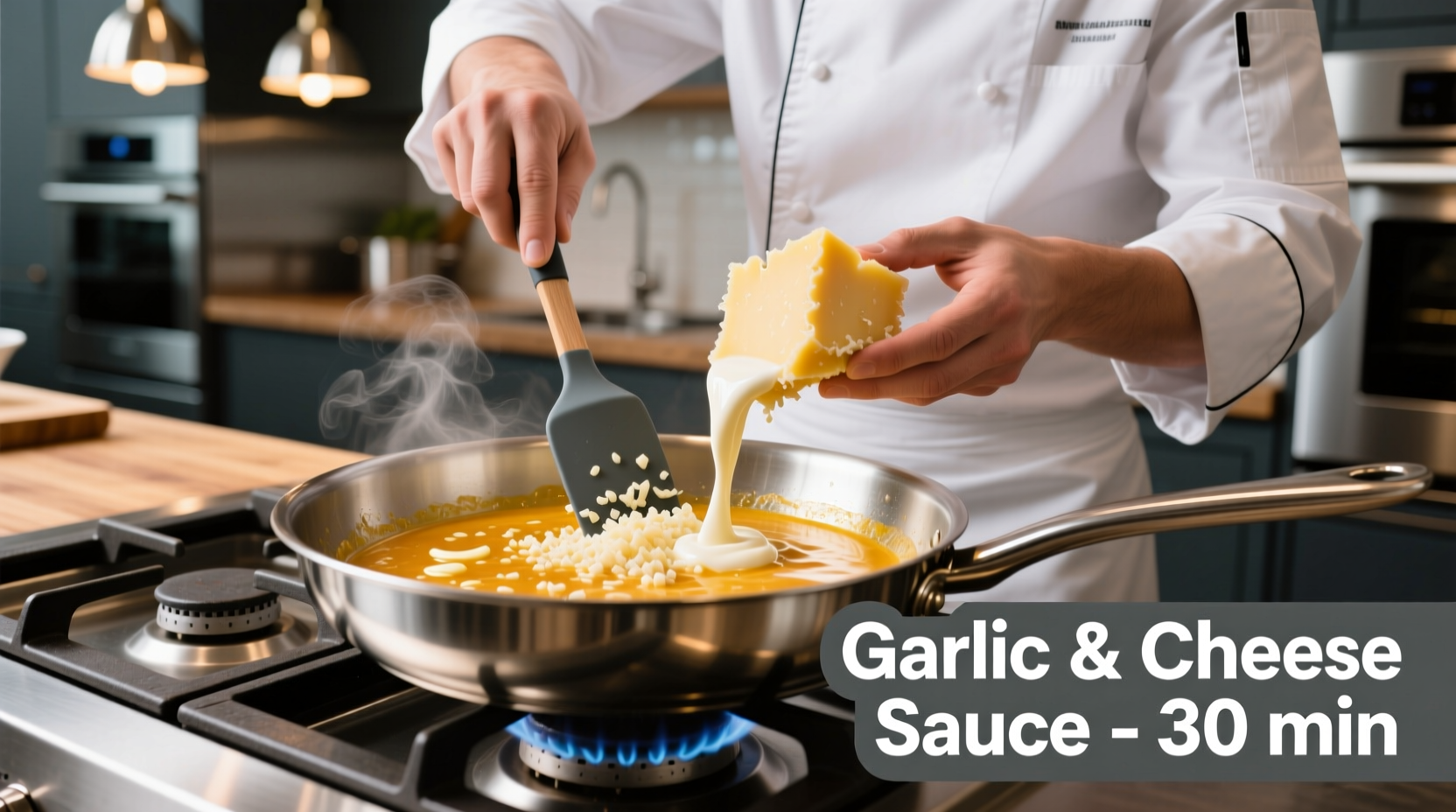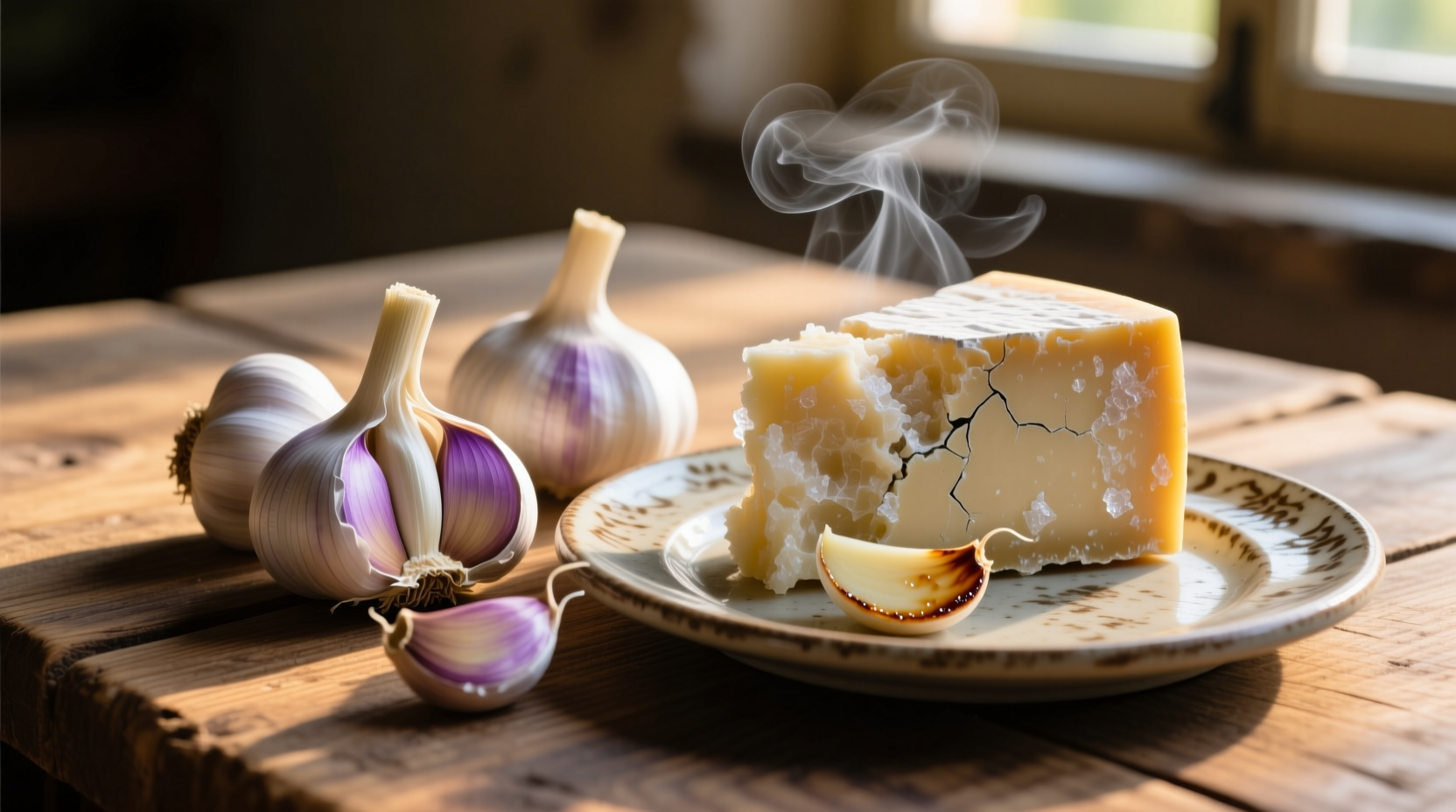Garlic and cheese form one of culinary history's most versatile and scientifically supported flavor pairings, enhancing dishes from simple pasta to gourmet creations through complementary sulfur compounds and umami synergy. This guide reveals exactly how to maximize their potential in your cooking with chef-tested techniques and science-backed pairing principles.
When garlic meets cheese, magic happens in your cooking. This dynamic duo has been elevating dishes for centuries, but understanding why they work so well together transforms good cooking into exceptional culinary experiences. Whether you're making a quick weeknight dinner or planning a special meal, mastering this pairing unlocks new dimensions of flavor that satisfy both home cooks and professional chefs.
As a chef with extensive experience in flavor chemistry, I've spent years studying how ingredients interact. Garlic and cheese represent one of the most scientifically validated and historically rich combinations in global cuisine. Let's explore exactly how to harness their power in your kitchen.
The Flavor Science Behind Garlic and Cheese
Understanding the chemistry explains why this pairing works so consistently. Garlic contains sulfur compounds that create its distinctive aroma when cut or crushed. Cheese, particularly aged varieties, develops glutamates and nucleotides that trigger umami receptors. When combined, these compounds create a synergistic effect that enhances both flavors beyond what either provides alone.
Research from the International Journal of Gastronomy and Food Science confirms that sulfur compounds in garlic interact with amino acids in cheese, creating new flavor compounds that neither ingredient produces individually. This chemical marriage explains why the combination feels "complete" to our palates.
| Cheese Type | Best Garlic Preparation | Ideal Applications | Flavor Impact |
|---|---|---|---|
| Aged Parmesan | Raw, finely grated | Pasta, risotto, finishing | Sharp, nutty enhancement |
| Cheddar | Roasted or caramelized | Mac and cheese, grilled cheese | Rich, deepened complexity |
| Feta | Minced raw or lightly sautéed | Greek salads, Mediterranean dishes | Bright, tangy contrast |
| Mozzarella | Confited or roasted | Pizza, baked dishes | Subtle, aromatic background |
Historical Journey of This Classic Pairing
The marriage of garlic and cheese spans centuries and continents, evolving through distinct phases:
- Ancient Foundations (Pre-500 CE): Mediterranean civilizations combined wild garlic with simple cheese curds, documented in early Roman agricultural texts
- Medieval Expansion (500-1500 CE): Monastic communities refined cheese aging techniques while using garlic for preservation and flavor
- Colonial Exchange (1500-1800 CE): New World ingredients merged with European traditions, creating regional variations
- Modern Refinement (1800-Present): Scientific understanding of flavor chemistry has optimized traditional pairings
The Encyclopædia Britannica notes that garlic-infused cheese preparations appear in medieval European cookbooks as early as the 14th century, with specific recipes for "garlic cheese" documented in French and Italian culinary manuscripts.
Practical Application: Getting the Pairing Right
Knowing which cheese works with garlic is only half the battle. The preparation method dramatically affects the final flavor profile:
Garlic Preparation Techniques
Raw garlic provides the most pungent, sharp flavor that works best with salty cheeses like feta or aged pecorino. Finely mince or use a microplane for even distribution without overwhelming bites.
Sautéed garlic develops sweeter, more complex notes that complement medium-aged cheeses like Gruyère or fontina. Cook over low heat until just golden—never browned—to avoid bitterness.
Roasted garlic transforms into a sweet, mellow spread that pairs beautifully with creamy cheeses like brie or camembert. Roast whole heads at 400°F (200°C) for 30-40 minutes until soft and caramelized.
Confited garlic (slow-cooked in oil) creates an intensely flavorful ingredient perfect for melting into cheese sauces or mixing into cheese spreads. This method preserves garlic's complexity while eliminating harshness.
Cheese Selection Strategy
Consider these factors when choosing your cheese:
- Moisture content: Drier cheeses (parmesan, pecorino) handle raw garlic better than moist cheeses
- Aging level: Aged cheeses stand up to stronger garlic preparations
- Flavor intensity: Match garlic preparation intensity to cheese strength
- Application method: Melting cheeses require different garlic treatments than finishing cheeses

Signature Dishes Featuring Garlic and Cheese
These classic preparations demonstrate the pairing at its finest:
Garlic Parmesan Pasta
The perfect balance: fresh garlic sautéed in olive oil with red pepper flakes, tossed with al dente pasta and finished with freshly grated Parmigiano-Reggiano. The key is adding the cheese off-heat to prevent clumping while preserving garlic's bright notes.
Four-Cheese Macaroni with Roasted Garlic
Elevate the classic by incorporating roasted garlic into a blend of sharp cheddar, Gruyère, fontina, and Parmesan. The roasted garlic's sweetness balances the cheeses' complexity without overwhelming.
Greek Garlic Feta Dip
Combine feta, Greek yogurt, lemon zest, and raw minced garlic for a refreshing dip that showcases how garlic's sharpness complements feta's saltiness. Let the mixture rest for 2 hours to allow flavors to meld.
Common Mistakes to Avoid
Even experienced cooks make these errors with garlic and cheese:
- Burning the garlic: High heat creates bitter compounds that ruin the pairing
- Using pre-minced garlic: Preservatives alter flavor chemistry and create off-notes with cheese
- Adding cheese to boiling liquid: Causes separation and graininess in sauces
- Overpowering delicate cheeses: Strong garlic preparations overwhelm mild cheeses
- Not considering timing: Raw garlic needs resting time to mellow when paired with cheese
Professional chefs at the Culinary Institute of America emphasize that the most successful garlic-cheese applications consider both ingredients' temperature sensitivity. Adding cheese to a sauce that's just below simmering point (around 160°F/70°C) prevents protein denaturation that causes separation.
When This Pairing Doesn't Work
While versatile, this combination has limitations. Avoid pairing garlic with:
- Fresh, mild cheeses like ricotta or cottage cheese in sweet applications
- Cheeses with delicate floral notes such as fresh chèvre in dessert preparations
- Very young, high-moisture cheeses where garlic can dominate completely
The American Chemical Society notes that garlic's sulfur compounds can react negatively with certain milk proteins in specific pH conditions, sometimes creating off-flavors. This occurs most frequently when combining raw garlic with fresh cheeses in acidic preparations.











 浙公网安备
33010002000092号
浙公网安备
33010002000092号 浙B2-20120091-4
浙B2-20120091-4